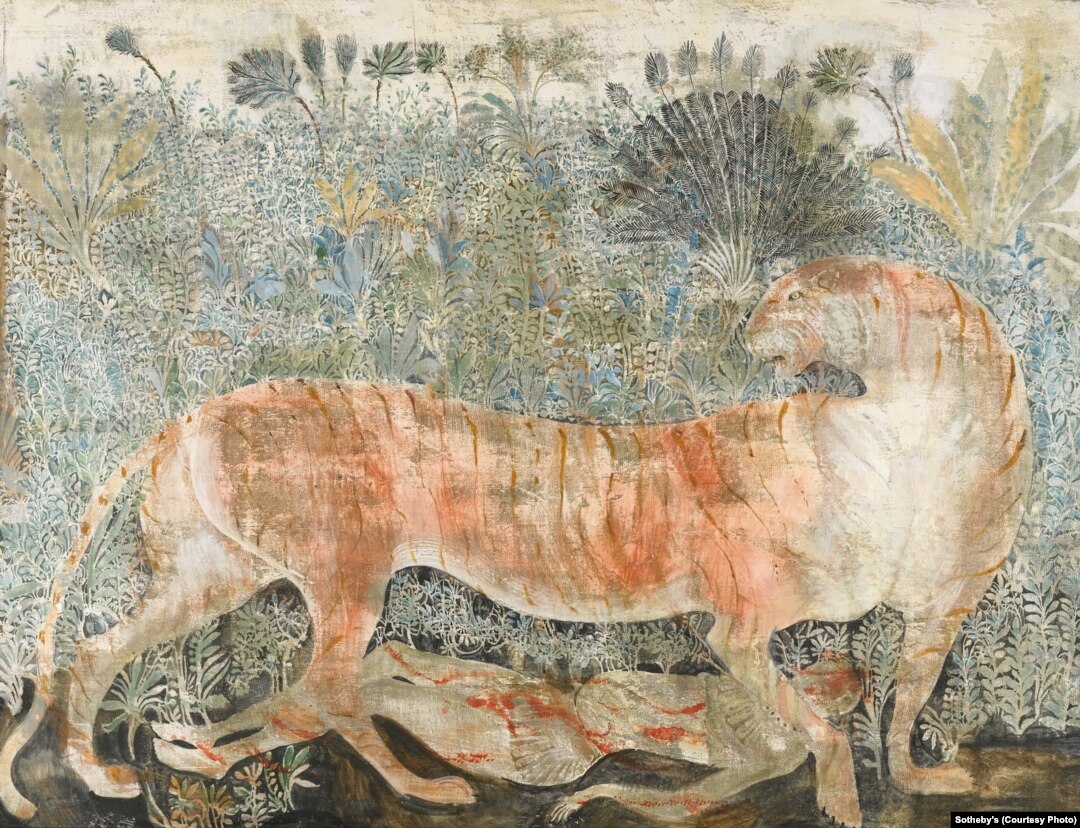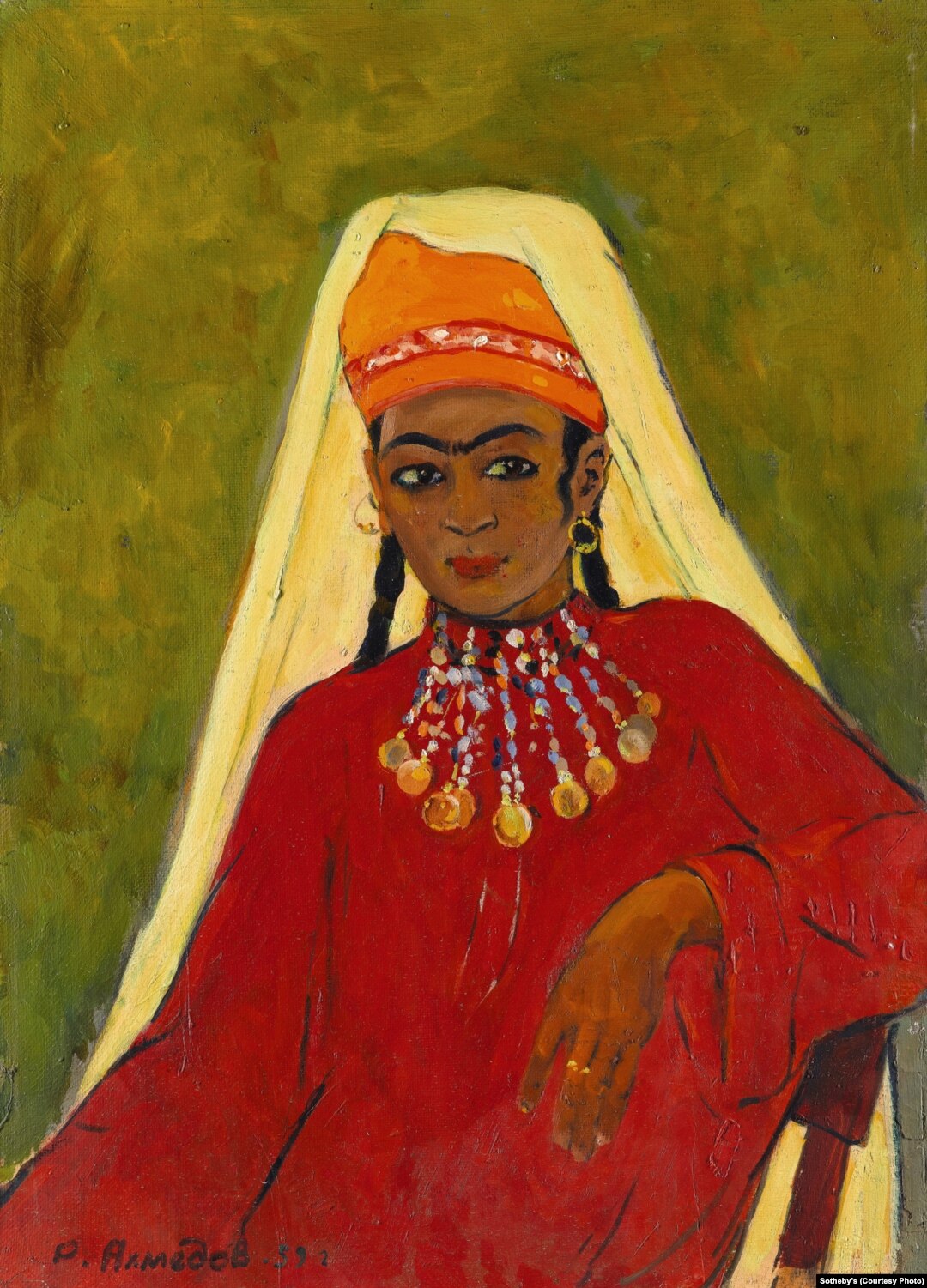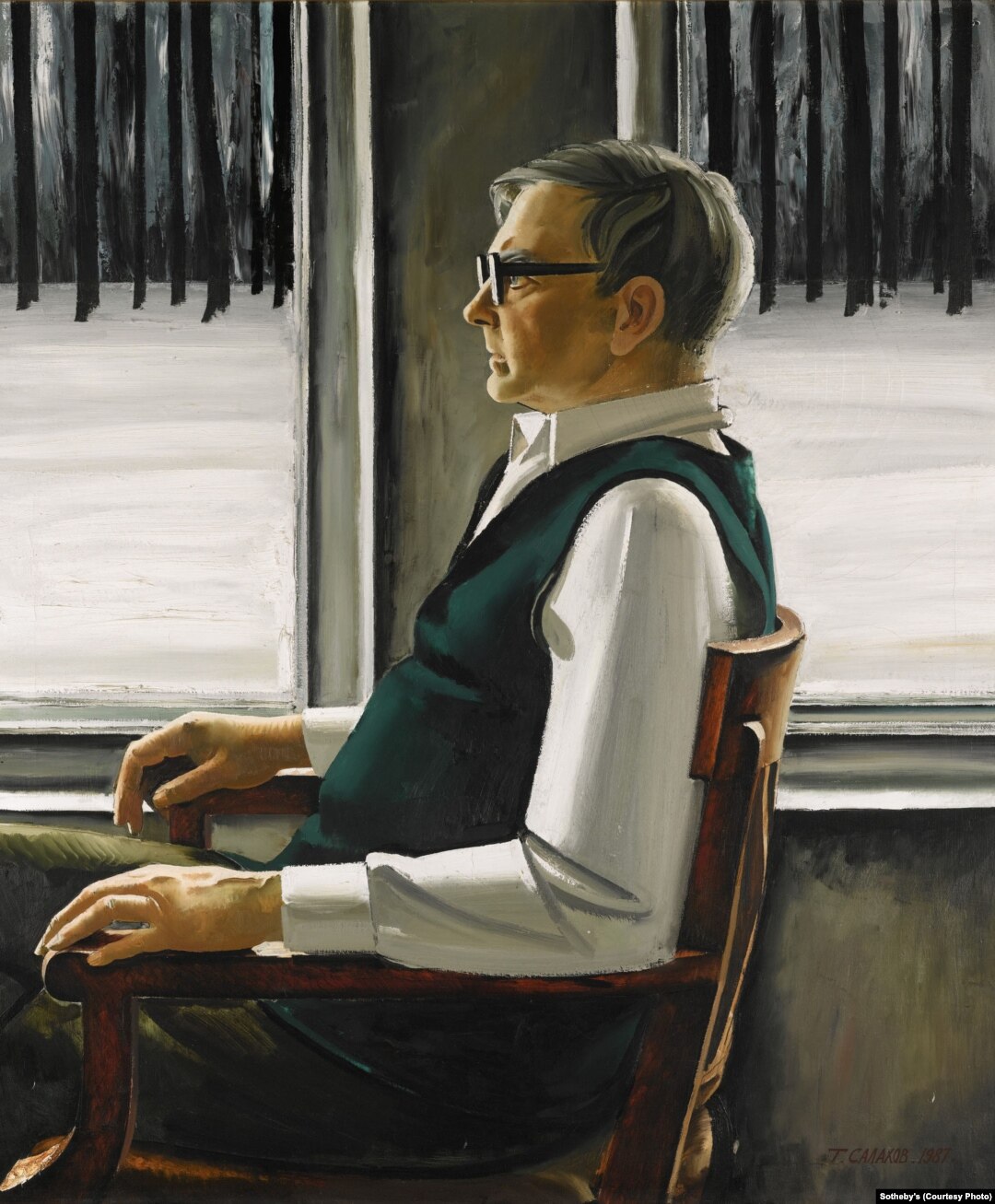At The Crossroads: Contemporary Art From The Caucasus And Central Asia

“Maneater of Kumaon,” a 2005 tempera painting by Georgia’s Merab Abramishvili (1957-2006). It is one of nearly 50 works by artists from the Caucasus and Central Asia featured in a special exhbition at Sotheby’s in London.

“Girl From Surkhandarya,” a 1959 painting by Uzbek artist Rakhim Akhmedov (1921-2008). The work was part of a series of portraits created by Akhmedov while he was studying decorative arts in southern Uzbekistan.

A 1987 portrait of Dmitry Shostakovich by Azerbaijani artist Tair Salakhov (b. 1928). Salakhov was a major figure of the Soviet art world and was celebrated for painting many of the leading composers of the time.
“Disintegration,” a 2012 wood and metal sculpture by Armenian artist Armen Gevorgyan (b. 1958). The broken wheel is symbolic of the Armenian people’s long history of resettlement.
“On Virgin Soil, Lunchtime,” by Kazakh avant-garde artist Salikhitdin Aitbaev (1938-1994), from the late 1960s or early '70s. The emergence of national identity was first seen in Kazakh art in the 1960s, led by artists like Aitbaev.
“The Aral Beach 2,” a 2011 lightbox photographic work by Almagul Menlibaeva (b. 1969) of Kazakhstan. Many of Menlibaeva’s works are motivated by deteriorating ecological conditions in her homeland.
“Bull’s Head,” a 1976 work made of oil-soaked trousers mounted on wooden boards, by Georgian nonconformist artist Avto Varazi (1926-1977). Many of Varazi’s works focused on the theme of the bull’s head.
“Mirages of Communism #1,” a 1994 photograph by Alimjan Jorobaev (b. 1962) of Kyrgyzstan. “Mirages” is part of a photographic series documenting the breakdown of the Soviet Union.
“The Road’s End,” a 1997 painting by Armenian artist Hakob Hakobyan (b. 1923). The piece, noted for its precise but muted palette of yellows and browns, is considered one of the highlights of the Sotheby’s exhibit.
“The Wall,” a 2009 work by Tajik artist Aleksei Rumyantsev (b. 1975). The piece, composed of real bricks laid over layers of cloth “mortar,” is meant to represent the plight of Central Asian labor migrants, many of whom work construction jobs in Russia.
“Untitled (from Dream Series),” a 2010 work by Uzbek artist Jamol Usmanov (b. 1961). Dreams and other images from Sufi poetry are a recurrent theme in Usmanov’s paintings.
“Mafiozi,” a 1984 oil painting by Azerbaijani artist Javad MirJavadov (1923-1992). He was considered one of Azerbaijan’s preeminent modernist painters and was staunchly opposed to the Socialist Realist school.
“Aydan (from Girls of Kyrgyzstan Series),” a 2011 photograph by Aza Shade of Kyrgyzstan (b. 1989). The series aimed to capture young Bishkek women – in this case, an 18-year-old medical student -- in their "usual habitat."
“Glamour Genetics,” a 2012 piece by Azerbaijani artist Mahmud Rustamov (b. 1967). The work incorporates a sheep’s head, goat feet, a cow’s lower jaw and thigh bone, and synthetic fur.
“Crucifixion,” a 1989 acrylic work by Georgian painter Irakli Parjiani (1950-1991). The painting is part of Parjiani’s Berlin Cycle, a series of spiritual abstracts that were completed shortly before his death.

